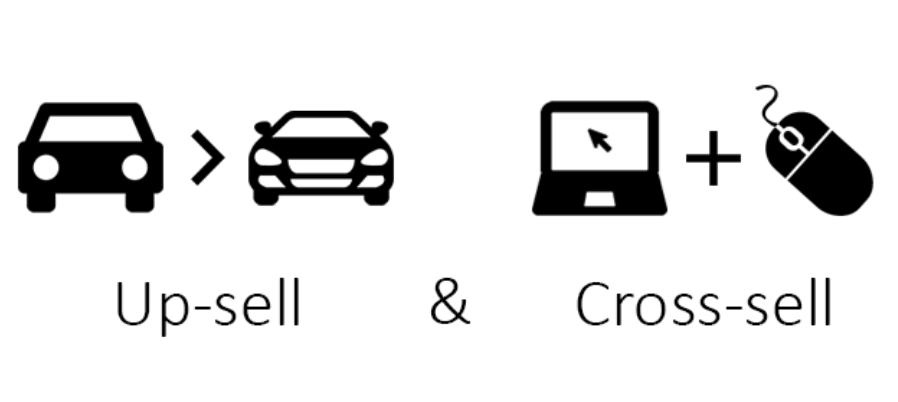Every business has lost customers. There’s not one business with a brand and system that satisfies everyone.
What matters is how you, as a business, react to this churn, to try and stop it happening (as much) in future.

So…
What is customer churn and why should you care?
Essentially, customer churn is a calculation of how many customers you’ve lost in a given time frame. The lower the number, the better!
Customer churn can cause serious problems for businesses as it can lead to scary losses in revenue, or even call center shrinkage for those who work in the BPO industry. You might think “well, we can just attract new customers if the old ones don’t want to stay, right?”
Technically, yes, you can. But it costs roughly five times more money to attract a new customer than it does to retain an oldie.
These statistics from KPMG prove why customer retention should be a priority for your business:

As you can see, customer retention is rated the most significant revenue driver. That should convince you to do your best to stop customer churn.
Below, we explain nine powerful strategies to help you achieve this.
1. Gather feedback often
How often have you bought a product or used someone’s services and decided to leave a customer review unprovoked? Probably not very often.
Customers usually completely forget about the business they’ve used once their product has arrived or the service is up and running. So ping them an email to follow-up.
If you send your products tracked, once you know the customer has received their parcel, give them a little time to familiarize themselves with their purchase and then ask them what they think. Or, if you provide SaaS, give them a few weeks to start feeling the benefit, and then slide into their inbox.
Whilst they’re waiting for the product to arrive or the service’s benefits to fully reveal themselves, request some quick feedback on how easy it was for them to complete their transaction and navigate your site.
Collecting feedback about every aspect of the customer journey means you can minimize the opportunities for a potential customer to lose interest. If feedback states that the payment process is confusing, change it. Your next potential customer might not be as patient.
2. Offer special discounts to customers who are on the fence
We would define an ‘on-the-fence’ customer as one who’s undecided on which company to trust their business to.
The most common reason for this reluctance will be money. The customer might really want to use your service, if only it was 10 percent cheaper. Subscription fees can easily be negotiated, so offer them that discount.
Receiving an email or phone call acknowledging their interest in the service will make a business feel well looked after and will show you want to help them. Offering a personalized discount is a great example of reducing customer churn through improved client relationship management.
If the customer proceeds with the purchase after you’ve offered the discount, you’ve got yourself a double win. Not only have you scored a new sale that’s been on the cards for a while, but you showed thoughtfulness to the client at the right time. This company will likely stick around for the long-haul, so well done!
3. Surprise your customers
Everybody loves a pleasant surprise. Receiving a compliment you weren’t expecting. Receiving an offer you weren’t hoping for. Receiving a little extra money off.
This is a popular business strategy, especially with first-time buyers. Show you appreciate them doing business with you by sending them a 30 percent off your next purchase offer.
Perhaps the client subscribed to a software service from you. Is there another service you offer that complements that? Let them know!
We acknowledge that if you’re a smaller business, you might find the last two strategies expensive. However, could you save elsewhere so you can give this a go?
For example, looking at 3CX alternatives for small business, you might be able to save money on your business VoIP technology and invest more in your customer retention strategies.
4. Underpromise (and overdeliver)
Similar to the previous strategy, underpromising what you can deliver to customers will leave them pleasantly surprised when you appear to go above and beyond their expectations.
Now we aren’t saying to tell customers that you offer the bare minimum, but perhaps tell them to expect their software to be optimized and ready to use in a week, when it’s likely to only be two days. This way, when they can get started earlier than expected, they’ll be highly satisfied and might even want to tell their friends in other businesses about you.
This is a particularly good strategy to reduce the attrition rate for B2B businesses. If another business knows they can rely on you to continuously exceed their expectations, they’re likely to remain loyal.
5. Upsell and cross-sell
Once you have determined what service a customer is interested in, it’s a simple technique to upsell and cross-sell to them.
Has a client expressed their interest in the cheaper level of subscription? Point out to them the more expensive alternative and why this one is better.
This can be done on your website as they are browsing (think: ‘you might also like’) or in a follow-up email once they have stopped interacting with the website.
With B2B website tracking you can see which businesses have browsed your services and then left. Why not reach out to them with an upsell and a cross-sell?
As you’ll see in the graphic below from Envato, upselling is about pointing a customer to a more expensive product (like a better car) or, more pertinently to B2B, a higher subscription level.

Cross-selling works in the same way, but you recommend services that would match the one the client is interested in.
This strategy can pleasantly surprise customers, as they may have genuinely not spotted the more expensive item or matching software.
To successfully upsell and cross-sell in your business, consider training your sales agents to do so. Especially for remote sales team management, Introducing a workforce management system software to your office can help you keep track of who is most up to the job.
6. Educate your customers
Customers love to feel in the loop. You’re telling them your product is the best, but why is it the best? What research made you reach this conclusion?
A great video marketing strategy is to introduce new services and software to your customers with an explanatory video. Being able to see a new product being used before they commit to buying will add a level of trust in your company.
What if a customer subscribes to software from you and it stops working? This can still be turned into an educational endeavor! You can start by easily creating opportunities for customers to see the value of your educational resources. A changelog that announces new features, bug fixes, and product updates can both pique user interests and keep them informed.
Through augmented reality remote support, your technicians can also show your customers how to fix faults on their own. This will save your business time and money on sending someone out to help, and it will boost your customer’s confidence in your services.
And if you invest in the right voice over internet phone provider, your team can be readily available to deal with customer struggles, even away from the office.
7. Identify the best team members to deal with complaints
Knowing how to navigate a bad customer experience can be tricky. It’s something of a talent to be able to remain calm and patient with a difficult individual.
Using contact center analytics, you can single out your best sales team agents to deal with awkward situations.
Once you have found them, consider diverting your angry or disappointed customers to these colleagues as standard. They can also train the rest of the team by sharing valuable first-call resolution tips and best practices.
8. Identify your most valuable customers and use them
It’s alright to have favorites. And your favorites should be your most loyal customers.
Loyal customers are more likely to risk subscribing to your more expensive or newer products. If the risk pulls off, they should then endorse you! With one of those feedback emails we mentioned earlier, you could get a quote from a customer to use on your website or socials.
Remember: customers trust customers.
Using social media to promote your business? Well, you should be! Review quotes stand out massively on social media, and if you pay for promotions, the right people should be seeing what your customers have said about you.
Check out the below example of a Facebook post:

SuretyBonds do a great job of utilizing their satisfied customers to both stop churn from others and earn new business. They highlight a loyal customer’s satisfaction with their service to instill confidence from potential customers to work with them, as well as show existing customers that the service is still worth it.
9. Spot which customers are at risk
One of the fundamentals of B2B sales is communication. And one of the best ways to stop customer churn is…communication!
Your customers that are at-risk of becoming part of the churn are those who you haven’t got in touch with recently, or who haven’t got in touch with you.
Perhaps a client requested a quote for a new product or a list of updated services and prices from you a while back. Haven’t heard from them since? They may be weighing up their options and considering what your rivals have to offer. If you’re the first business to call them back, though, you may just get them to stick around.
Summary
To put it bluntly, how you deal with customer churn can make or break your business.
Investing your time and effort into keeping customers on your side will save you a significant amount of money that would otherwise be wasted trying to attract new, less interested parties.
Which of the lessons you’ve learned today can you apply to your own business?
About the Author
 Jenna Bunnell is the Senior Manager for Content Marketing at Dialpad, an AI-incorporated cloud-hosted unified communications system that provides valuable details of both outbound and inbound phone calls for business owners and sales representatives. She is driven and passionate about communicating a brand’s design sensibility and visualizing how content can be presented in creative and comprehensive ways. Here is her LinkedIn.
Jenna Bunnell is the Senior Manager for Content Marketing at Dialpad, an AI-incorporated cloud-hosted unified communications system that provides valuable details of both outbound and inbound phone calls for business owners and sales representatives. She is driven and passionate about communicating a brand’s design sensibility and visualizing how content can be presented in creative and comprehensive ways. Here is her LinkedIn.


































